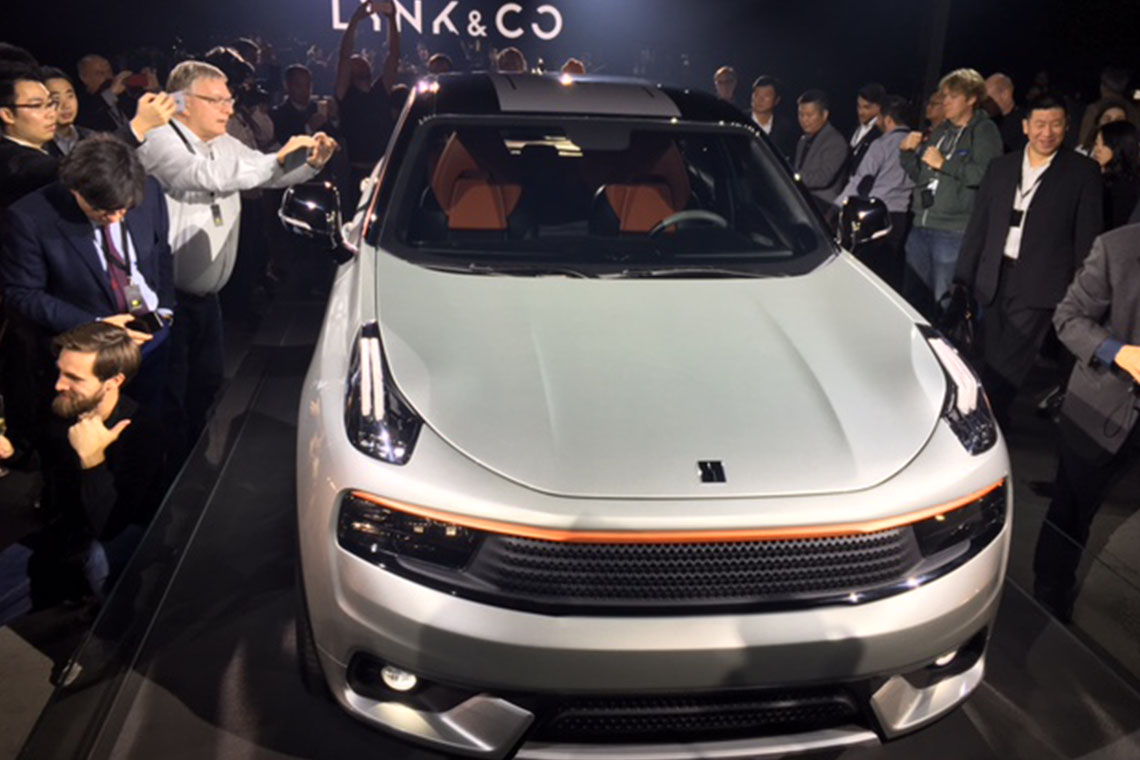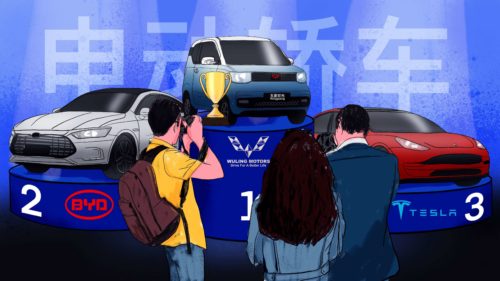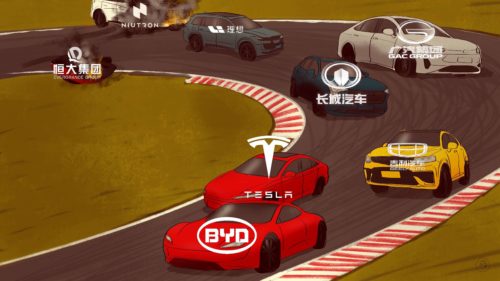Geely: The astonishing rise of a small Chinese car company
An insider’s account of how a tiny, privately owned automaker went from junk to hunk.

Ten years ago, Geely Automotive was a car pipsqueak, a maker of problem-prone machines with names like King Kong and Beauty Leopard, and with sticker prices under $10,000. When Chinese consumers couldn’t afford a better car, they turned to Geely.
Today, Geely is busting all-time sales and profit records. The Hangzhou-based company is China’s number one private automaker after Great Wall Motors. Globally, it is quickly expanding its market share through ownership of the resurgent Volvo Cars. How did Geely move from being an also-ran to a competitive automaker so quickly? As a consultant focusing on China’s automotive industry, I saw firsthand the transformation of this unlikely upstart into a formidable global player.
Geely and the Shanghai Auto Show
The Shanghai International Automobile Industry Exhibition (Auto Shanghai) will be held from April 21 to April 28, 2017. Here’s what to look for, and where Geely fits in:
SUVs are red-hot in China
- The People’s Republic is already the world’s number one electric vehicle (EV) market. The sports utility vehicle (SUV)/crossover market, on track to reach 10 million units in 2017, now accounts for 40 percent of all Chinese passenger vehicle sales. Look for new crossovers and EVs to dominate the Shanghai Auto Show. Chinese consumers and state agencies bought a stunning 27 million cars, trucks, and buses last year. For comparison, Americans bought 17.5 million.
- Geely continues to ride the crossover wave. In the first quarter of 2017, Geely sales soared 91 percent to 278,000 vehicles, according to numbers from the China Association of Automotive Manufacturers. Geely’s growth is being powered by three new crossovers: the Boyue, Emgrand GS, and Vision. Two more upcoming crossovers from the Geely Group will be on display at the Shanghai Auto Show, including the all-new Lynk 01.
Internet giants
- China’s internet giants will also be present at the Shanghai Show. Next EV will show the NIO EP9 supercar, the world’s fastest electric car. Baidu’s autonomous drive technology will power a new model produced by the Beijing Automotive Industry Corporation. Alibaba’s connected-car technologies will also be featured in the Roewe RX5 SUV.
Chinese competitors to Geely
- Beijing Automotive and Hong Kong-listed BYD are in a dogfight for leadership in electric vehicles. The two companies produce 8 of the 10 best-selling EVs in China.
- Great Wall Motors — sometimes called the Jeep of China — makes China’s best-selling SUV, the Haval H6.
Dead last
In the summer of 2008, Li Shufu 李书福, chairman of Geely Automotive, sat at a conference table at the Shanghai Hyatt Hotel across from my team at the auto-focused market research firm J.D. Power. (Disclosure: I have known Li since 2003, and worked as managing director of J.D. Power China from 2007 to 2010, consulting for Geely.) Our team had just delivered a report and survey on the status and prospects for Geely Automotive in the Chinese market. The results were stunning: In the survey, the company had finished dead last among 36 car brands.
Not good. We waited for Li’s response.
He finished the report and looked at us without saying anything for several seconds, his arms crossed. Then his words started firing rat-tat-tat, like a machine gun: “Problem’s the engine. That’s it. Very clear. It is a problem. Need to fix it. The engine.”
Seconds later, another short burst: “We can’t do any worse.”
For the next hour, my team and I reviewed bar charts and things gone wrong with Geely executives. But Li didn’t so much as glance at the presentation slides. He appeared bored. He said nothing.
He had already moved on.
Li understood that for Geely to drastically improve its quality, his cars would need a revolutionary breakthrough. But how?
He could not expect much help at home, where Geely had to compete with powerful, connected state enterprises — China’s favored sons. “The government taxes us and the funds go to our competitors, the state-owned companies!” Li protested later. “They take our money and give it to our competitors!” Li sensed the need to look outside. When Ford Motor Company put Volvo up for sale in 2010, Li pounced, buying the loss-making Swedish carmaker for $1.8 billion. One person involved in the deal later said, “Li is shrewd, ambitious, and charismatic.”
But analysts were skeptical of the deal. What did Li and his team know about running a premium car company? The consensus was that Geely would gut and eventually destroy Volvo.
It didn’t. Li, hailing from the hardscrabble farming town of Taizhou, had a different vision. “A tiger belongs to the forest,” he said at the time of the Volvo purchase. “It belongs to the wild world and not confined in a zoo. We need to liberate this tiger.” He gave Volvo’s Swedish management the freedom to forge a renaissance, and it delivered. In 2016, just six years after the purchase, Volvo Cars sold more vehicles and made higher profits ($785 million) than at any time since its formation in 1927. That same year, the Volvo XC90 won the prestigious North American Truck of the Year Award, beating out formidable entries from BMW, Mercedes, and Audi for top honors.
Volvo has also added new factories in China. In 2015, it became the first company to ship made-in-China vehicles to the United States. That S60 sedan you see at the Volvo dealership in downtown Atlanta? Built in China.
Returning Volvo to strength was a huge accomplishment. But Li sought more than just the Volvo business. Shortly after the purchase, he made two other strategic moves.

Secret project “L”
First, Li began investing several hundred million dollars a year into the newly created China Europe Vehicle Technology (CEVT), a tech center in Gothenburg, Sweden. Inside the facility, 1,700 Chinese and European engineers worked shoulder-to-shoulder on a secret project code-named “L.” The Chinese employees worked on keeping costs low. The Europeans focused on design and quality.
In October 2016, the world learned that the “L” stood for an entirely new car brand called Lynk & Co. (Readers may be forgiven for thinking the name is Lincoln with a different spelling.)
Inside a high-class venue in downtown Berlin, more than a thousand journalists from around the world got their first glimpse of the Lynk & Co 01, a five-door crossover. The car borrows from the linear shape of the Jeep and the sporty, sculpted look of a Porsche, according to the design team members. Lynk & Co will start building and selling the 01 in China later this year, with debuts in Europe and the U.S. scheduled for 2018.
But why another brand when the world is flooded with so many? Lynk & Co customers will be buying a vehicle with Volvo-like quality at an affordable price. This market positioning mirrors what the Volkswagen Group does very successfully with VWs and Audis. Lynk & Co also plans to bypass dealerships and sell direct, like Tesla. And owners will be able to share their cars on demand as part of a ride-sharing network.
Geely Automotive’s global march also features an important new electric vehicle initiative in the U.K. This month, the company announced plans to invest more than $300 million in a new plant to build electric taxis for London streets. Geely acquired the London Taxi Company out of bankruptcy in 2013 for less than $15 million.
For the Geely brand itself, Li brought in Peter Horbury, Volvo’s highly respected design chief, predicting that better designs would lead to significantly better products. In turn, that led to stronger sales as Chinese consumers responded enthusiastically to the Horbury-designed SUVs. Geely sales jumped 50 percent to a record 766,000 vehicles in 2016. Profits more than doubled to a record $741 million, the company told the Financial Times on March 22.
The momentum is expected to continue. This year alone, Geely sales are likely to surpass 1 million units. Investors have taken notice as Geely shares — listed in Hong Kong — have soared above $11 from just $3 a year ago. Geely is now on Chevy’s heels, and nearing the industry average in rankings such as the J.D. Power Report. Considering Horbury’s new generation of better-designed vehicles, it’s safe to say those rankings will continue to rise.
When we met a few months ago in Europe, Li, now a multibillionaire, struck me as unusually relaxed and content. I told him in Chinese that he looked younger than before. Li’s eyes widened, he flashed a smile and fired back: “Younger than before? Impossible! Younger than before? Not possible!”
Then he set his gaze on a point over my shoulder and held it there. He moved on and seemed to be fixated on something new: The next conquest.
Thanks to Bill Endemann for editorial advice.





